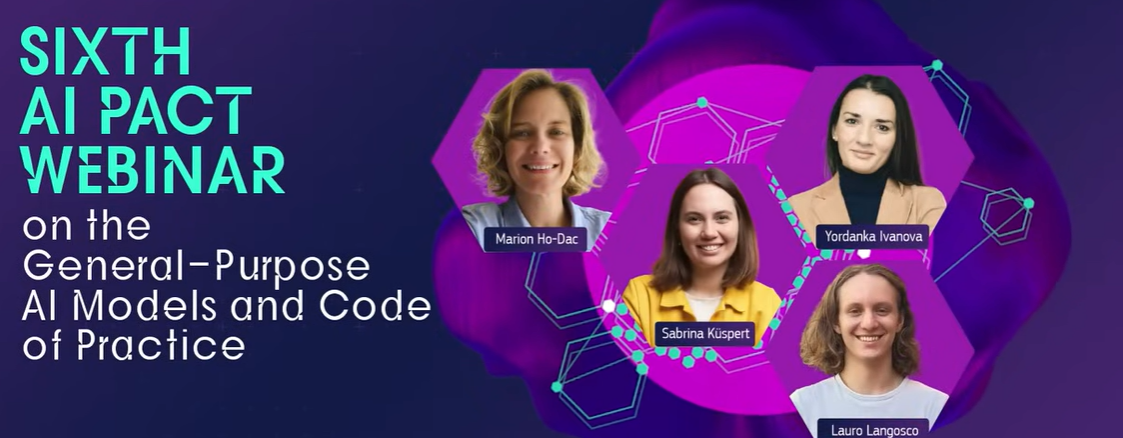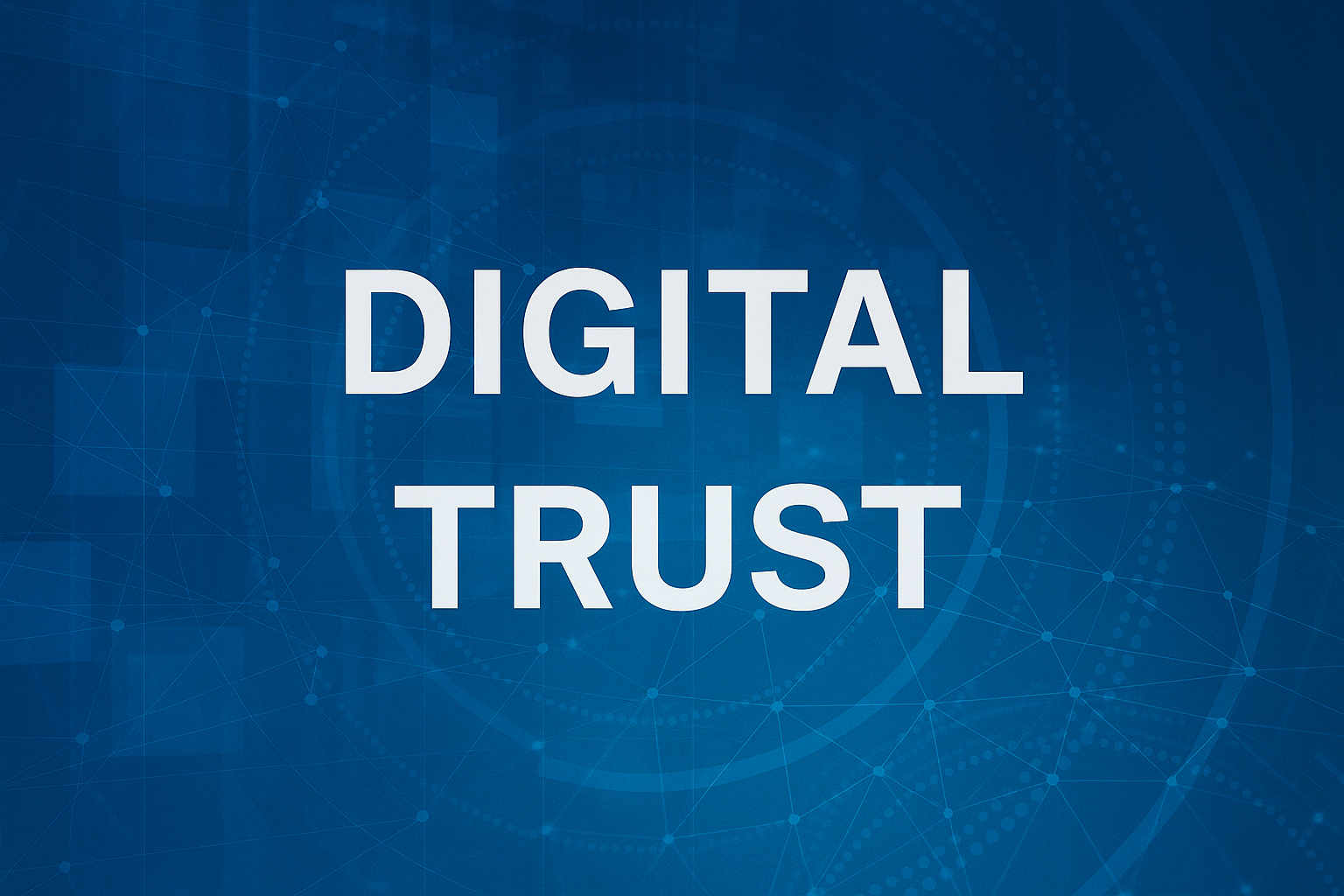🏛 Government Developments
UN–Singapore Cybersecurity Programme Extended to Boost Member State Capabilities
Source: CSA Singapore Publication date: 2025-10-21
The UN–Singapore Cybersecurity Programme (UNSCP), launched in 2018, aims to strengthen the cybersecurity capacity of UN member states. The programme includes a cybersecurity fellowship and an online course on cyber diplomacy to train senior national officials on emerging cyber threats, strategic policy planning, and norms of responsible state behaviour.
In 2025, the programme was extended for an additional three years and expanded to cover new areas such as artificial intelligence, quantum computing, and cyber-enabled fraud. The initiative is jointly driven by Singapore’s Cyber Security Agency and the UN Office for Disarmament Affairs to promote knowledge sharing, global cooperation, and capacity building in cybersecurity.
💡 AI View: The extension reflects how the international community is responding to increasingly complex cyber threats through training and cooperation, especially in frontier domains like AI and quantum. Sustained international collaboration is critical to an open and secure cyberspace.
🔗 Read full article
Audit Finds Security Weaknesses in U.S. Medicaid Systems and Recommends Remediation
Source: GovInfoSecurity Publication date: 2025-10-22
The Office of Inspector General at the U.S. Department of Health and Human Services conducted penetration tests on Medicaid Management Information Systems in nine U.S. states and Puerto Rico. The tests revealed that the systems were not adequately protected against advanced, sophisticated attacks. Weaknesses included insufficient data-in-transit protection and delayed patching.
The review, which covered 2020–2022, warned that these gaps could lead to data breaches and fraud; similar issues have previously resulted in multimillion-record data exposures. The watchdog issued 27 remediation recommendations, such as system upgrades and secure coding practices. By May 2025, nearly half had been implemented. The audit underscores the urgency and difficulty of safeguarding healthcare data.
💡 AI View: The findings highlight how fragile public health infrastructure can be. Rapid remediation and continuous monitoring are critical to protect highly sensitive medical data and maintain public trust.
🔗 Read full article
China and EU Hold Urgent Trade Talks on Rare-Earth Export Restrictions
Source: Euractiv.com Publication date: 2025-10-21
In October 2025, China’s Minister of Commerce Wang Wentao met with the EU Trade Commissioner in Brussels to discuss China’s restrictions on rare-earth exports. Rare earths are essential materials for high-tech and defense applications, and China controls most of the world’s production and refining capacity.
The EU is concerned that export limits could disrupt supply chains for sectors such as electric vehicles and advanced fighter aircraft. The meeting aimed to defuse tensions and avoid escalation into a broader trade conflict, building on an upgraded EU–China supply chain coordination mechanism announced at the July summit. Both sides reiterated their positions but also stressed the need for cooperation to keep rare-earth supply stable.
💡 AI View: Rare earths are strategically vital for advanced technology. Negotiating access to them is now a matter of industrial resilience and national security, not just trade. Stabilizing this supply chain has long-term implications for global tech competitiveness and defense readiness.
🔗 Read full article
UK Unveils AI Regulation Blueprint and ‘Growth Lab’ to Enable Safe Innovation
Source: IAPP Publication date: 2025-10-21
On 21 October 2025, the UK government announced a new AI regulatory blueprint, including the creation of an “AI Growth Lab.” The Lab will act as a regulatory sandbox, temporarily relaxing certain rules so AI solutions in areas like healthcare, transport, and manufacturing can be tested quickly but safely.
The goal is to cut administrative barriers, accelerate responsible AI adoption, and modernize public services. The Chancellor of the Exchequer projected policy benefits of up to £6 billion in savings by 2029.
The plan blends flexible oversight with targeted licensing and draws on lessons from the UK’s prior fintech sandbox. Industry groups broadly welcomed the approach as pro-innovation while still focused on risk control.
💡 AI View: The UK is positioning itself as a leader in “safe speed.” Regulatory sandboxes and sector-focused pilots aim to grow AI adoption without losing public trust — a model other governments are likely to study.
🔗 Read full article
U.S. Army Introduces AI to Streamline NCO Promotion Boards
Source: MeriTalk Publication date: 2025-10-21
The U.S. Army’s Human Resources Command announced it is using artificial intelligence to assist in the evaluation of noncommissioned officers (NCOs) for promotion. The AI model helps screen out less competitive candidates so human board members can focus their attention on the most promising personnel.
Sensitive information is excluded from the model, and all AI recommendations are reviewed by humans to mitigate bias and maintain fairness. The Army has already used a similar model in officer selection with positive results. If the pilot succeeds, the Army will seek Congressional backing to extend AI support to more promotion processes, with the aim of boosting efficiency and transparency.
💡 AI View: Military HR is becoming data-driven. Using AI for promotion decisions shows how automation is being embedded into leadership pipelines — but with explicit human oversight to preserve perceived fairness and accountability.
🔗 Read full article
CISO–DPO Hybrid Leadership Model Drives Convergence of Security and Compliance
Source: GovInfoSecurity Publication date: 2025-10-22
Under growing cybersecurity risk and privacy compliance pressure, more organizations are merging the Chief Information Security Officer (CISO) and Data Protection Officer (DPO) roles. This combined model aligns technical security controls with privacy and regulatory obligations, helping leaders make faster decisions and allocate resources more efficiently across jurisdictions.
The hybrid leader must coordinate cross-functional teams and navigate heavy regulatory complexity. The approach reinforces “privacy by design” and “security by design,” and is seen as an emerging model for building organizational resilience and compliance maturity.
💡 AI View: The CISO–DPO merger reflects how inseparable cybersecurity and privacy governance have become. Unifying these areas can accelerate risk decisions — but it also concentrates responsibility and workload in a single leadership seat.
🔗 Read full article
⚖️ Regulatory & Compliance
IAPP Releases U.S. Data Privacy Litigation Series
Source: IAPP Publication date: 2025-10-21
In March 2025, the International Association of Privacy Professionals (IAPP) released a series of PDF resources on U.S. data privacy litigation. The series explains how individual and class-action lawsuits are using existing laws to protect privacy rights.
Privacy lawsuits are rising sharply and now span contract breaches, website tracking, security failures, and even shareholder actions. These cases are shaping corporate accountability, defining legal boundaries around data use, and building a growing body of case law that advances privacy protection. The resources help legal and privacy teams understand trends and litigation strategies.
💡 AI View: Litigation is becoming a key driver of privacy enforcement in the U.S. The courtroom is now as important as the regulator, forcing companies to upgrade compliance and governance before they’re sued.
🔗 Read full article
European Parliament Approves New Rules to Speed Up Cross-Border GDPR Enforcement
Source: IAPP Publication date: 2025-10-21
The European Parliament has endorsed new rules designed to simplify and accelerate cross-border enforcement of the General Data Protection Regulation (GDPR). The framework sets clearer investigation timelines, cooperation mechanisms, and dispute-resolution procedures among EU data protection authorities.
Lead supervisory authorities will generally be required to conclude investigations within 12–15 months, with limited extensions for complex or high-impact cases. An early resolution mechanism is intended to reduce conflict and delays between authorities. The reform strengthens complainants’ rights and aims to deliver faster, more consistent outcomes across member states. The rules will enter into force once adopted by the Council of the EU.
💡 AI View: Faster cross-border enforcement matters because risk is global and data flows ignore borders. Stronger, more predictable timelines can build public trust and make GDPR enforcement more credible.
🔗 Read full article
Norwegian Court Upholds Fine Against Grindr for Selling User Data Without Consent
Source: IAPP Publication date: 2025-10-21
An appellate court in Norway upheld a fine of 65 million NOK against dating app Grindr, ruling that it unlawfully sold sensitive user data to advertisers without valid consent. The case, brought by the Norwegian Consumer Council, involved highly sensitive details such as sexual orientation and location data. The court found the violations serious and intentional.
The decision is viewed as a landmark for privacy enforcement in Europe and a warning to the adtech ecosystem that monetizing intimate data without explicit, informed consent will trigger significant penalties. Grindr said it respects the ruling but is evaluating next steps.
💡 AI View: This ruling raises the bar for lawful data monetization. It reinforces that “consent” must be meaningful — especially when processing data tied to identity, behaviour, and location.
🔗 Read full article
France’s CNIL Publishes Practical Guidance on Digital Political Advertising for 2026 Municipal Elections
Source: CNIL Publication date: 2025-10-21
The French data protection authority (CNIL) released six practical guidance notes to help political actors comply with data protection and transparency rules during the 2026 municipal elections. The guidance covers lawful data use in campaigning, voter list management, limits on database building, and allocation of responsibility among stakeholders.
It reflects new European transparency requirements for digital political advertising combined with GDPR obligations. CNIL also launched a targeted outreach campaign and plans to promote the guidance at municipal events and conferences, aiming to protect voter data integrity and sustain public trust in democratic processes.
💡 AI View: Election integrity is now also data integrity. This guidance aims to prevent misuse of personal data in political targeting and to make digital campaigning more transparent and accountable.
🔗 Read full article
Rise of Collective Actions in Europe Reshapes Insurance Liability and Risk Management
Source: IAPP Publication date: 2025-10-21
Following the EU’s 2020 Representative Actions Directive, several European countries — notably France and Portugal — have expanded collective action mechanisms that allow large groups of consumers to sue over privacy violations. This is driving an uptick in privacy-related class-style litigation and pressuring insurers to rethink cyber and liability coverage.
Policies now need to address not just data breaches but broader privacy harms. Experts warn that as lawsuits multiply, premiums may rise and claims handling may tighten. Still, robust cyber/privacy insurance aligned with GDPR compliance remains an important risk management tool for organizations navigating a more aggressive litigation landscape.
💡 AI View: Collective actions empower consumers but also reshape corporate risk economics. Insurers, legal teams, and CISOs are being pulled into the same conversation about privacy exposure.
🔗 Read full article
Netherlands Hosts Webinar to Prepare Organizations for Upcoming Cybersecurity Act
Source: NCSC Netherlands Publication date: 2025-10-21
The Dutch National Cyber Security Centre and the National Coordinator for Counterterrorism and Security co-hosted a webinar to explain the soon-to-be-enforced Dutch Cybersecurity Act (Cyberbeveiligingswet). The session covered the law’s background, scope, and organizational duties — including incident reporting obligations, security assurance requirements, and mandatory registration.
The goal is to raise awareness among organizations that are not yet familiar with the law, so they can prepare operationally and legally. The Cybersecurity Act is expected to strengthen national cyber resilience by clarifying responsibilities and elevating baseline security standards across critical sectors.
💡 AI View: Training and outreach are essential for effective regulation. Proactive education helps organizations move from “paper compliance” to real security maturity.
🔗 Read full article
New York Issues Tough Cybersecurity Rules for Hospitals, Tightening Data Governance and Incident Reporting
Source: GovInfoSecurity Publication date: 2025-10-22
New York State has enacted cybersecurity requirements for hospitals that go beyond HIPAA. Hospitals must report cyber incidents to the state Department of Health within 72 hours, implement multi-factor authentication, conduct regular risk analyses, and designate a Chief Information Security Officer.
The rules apply broadly to health data, not just traditional medical records, and require hospitals to prove that they have active security and compliance programmes. Experts say the regulation signals New York’s determination to protect healthcare operations and patient data, but it will also create major compliance and governance pressures across the healthcare sector.
💡 AI View: Hospitals are critical infrastructure. Faster reporting, stronger authentication, and named security leadership bring healthcare closer to the security expectations already placed on finance and energy.
🔗 Read full article
🏗 Standards & Certification
(No new items reported in this edition.)
🏭 Industry Trends
Veeam to Acquire Securiti AI to Advance Intelligent Data Protection and Governance
Source: GovInfoSecurity Publication date: 2025-10-22
Data management vendor Veeam plans to acquire data security posture management company Securiti AI for $1.725 billion. The acquisition aims to merge production data management and backup data protection with automated risk and compliance insight.
Securiti AI, led by former Symantec executives, focuses on end-to-end data security, privacy, and governance. Veeam positions the deal as a way to help customers pursue responsible, controlled AI transformation across fragmented data estates. The move strengthens Veeam’s play in AI-driven data security and privacy compliance, and signals growing market demand for unified visibility over where sensitive data lives and who can access it.
💡 AI View: Data security posture management plus AI governance is becoming a single story. Vendors are racing to offer “secure AI transformation” as a product, not just a consulting promise.
🔗 Read full article
Virtual Segmentation and Zero Trust Strategies Gain Traction in OT/ICS Environments
Source: GovInfoSecurity Publication date: 2025-10-22
Across 2025 cybersecurity conferences, experts repeatedly stressed the urgency of securing operational technology (OT) and industrial control system (ICS) environments, many of which run on legacy equipment that is hard to patch.
Recommended defenses include workflow-aware virtual segmentation, zero trust architectures, and microsegmentation tailored to specific industrial processes. AI is increasingly being applied to automatically group assets and generate enforcement policies, improving response speed.
Real-world attacks — including incidents affecting municipal heating infrastructure in Ukraine — show that OT targets remain under active threat. Security teams are being urged to build process-aware defenses and tighten collaboration between IT and OT teams to improve resilience.
💡 AI View: OT security can’t rely on “air gaps” anymore. Virtual segmentation and zero trust are now seen as practical survival tactics for critical infrastructure.
🔗 Read full article
CISO Security Priorities Survey Highlights AI and Cross-Region Challenges
Source: CSOonline Publication date: 2025-10-21
A 2025 CSO survey found that more than two-thirds of Chief Information Security Officers are responsible for security across multiple geographic regions. Budget pressure and talent retention remain persistent pain points.
Top concerns include data protection, cloud security, and AI security. Seventy-three percent of respondents said they support deploying AI-driven security capabilities, and 58% plan to increase investment. Healthcare organizations in particular are adopting AI-driven clinical decision support tools.
While CISOs are wary of AI-enabled threats, most also see AI as essential to faster detection and response. Board-level engagement is rising, with about 70% of organizations reporting a dedicated cybersecurity director on the board. The survey covered large enterprises in North America, Asia-Pacific, and Europe.
💡 AI View: AI is no longer “experimental tooling” — it’s core to security operations. But success still depends on budget, talent, and the ability to coordinate security policy across regions.
🔗 Read full article
Software Supply Chain Expert Allan Friedman Joins NetRise to Advance SBOM Adoption and AI-Driven Risk Identification
Source: SecurityWeek Publication date: 2025-10-21
Allan Friedman, a leading advocate for Software Bills of Materials (SBOMs) and formerly a senior figure at U.S. CISA, has joined supply chain security company NetRise as a strategic advisor.
NetRise helps customers map third-party software components and vulnerabilities using SBOMs, and augments that data with AI-driven risk analysis. Friedman argues that while AI can surface insights faster, high-quality SBOM data is still the foundation for meaningful software supply chain security.
His move is expected to accelerate industry adoption of SBOM production, analysis, and standardization — including within defense and critical infrastructure contexts where transparency into embedded components is becoming mandatory.
💡 AI View: SBOMs are evolving from “compliance paperwork” into live telemetry for supply chain risk. Pairing them with AI is how organizations hope to keep up with fast-moving vulnerabilities.
🔗 Read full article
Mapping Bitfields in Microsoft 365 Audit Logs Enhances Authentication Monitoring
Source: GBHackers Publication date: 2025-10-21
Security researchers have decoded numeric values in Microsoft 365 audit logs, showing they are actually bitfields that map to specific authentication methods. By correlating these bitfields with login techniques, defenders can gain deep visibility into which authentication paths were used, how phishing-resistant they were, and how hybrid identity solutions are deployed.
This reverse engineering fills gaps left by incomplete vendor documentation and gives security teams richer data for policy enforcement, phishing defense, and incident response in complex identity environments.
💡 AI View: Identity is the new perimeter. Better telemetry on how users actually authenticate is essential to stopping credential theft and session hijacking.
🔗 Read full article
Traditional Banks Embrace Blockchain to Transform Payments and Compliance
Source: HackRead Publication date: 2025-10-21
Major banks including JPMorgan and HSBC are increasingly integrating blockchain into core services such as cross-border payments, trade finance, and asset tokenization. Blockchain is being used to accelerate settlement, cut transaction costs, and increase transparency and auditability for compliance.
Regulators have begun clarifying the treatment of digital assets, creating a more predictable environment for adoption. Central bank digital currency pilots are also driving convergence between traditional finance and blockchain-based infrastructure.
The financial sector is now moving from cautious experimentation to operational deployment, aiming to modernize both efficiency and risk controls.
💡 AI View: Banks are no longer dismissing blockchain as “crypto hype.” It’s being reframed as compliance tech and liquidity infrastructure, not just speculative finance.
🔗 Read full article
⚔️ Threat Landscape
Monolock Ransomware Sold Openly on the Dark Web Signals New Ransomware Trend
Source: GBHackers Publication date: 2025-10-21
A new ransomware strain called Monolock is being aggressively advertised on dark web forums. It offers multithreaded AES-256 encryption, multi-platform support, and features to kill security processes in real time. Sellers highlight its high-speed encryption, command-and-control monitoring, and ability to disable protective tooling. The price ranges from 2.5 to 10 Bitcoin.
Monolock can also propagate via torrent distribution and encrypt files in cloud storage, increasing the impact of an intrusion. Security researchers urge organizations to harden endpoints, maintain robust backups, and monitor suspicious traffic, while law enforcement is tracking the sellers. The case shows how ransomware is becoming more “productized,” powerful, and accessible to less-skilled attackers.
💡 AI View: Ransomware is evolving toward speed, stealth, and ease of reuse across platforms. Layered defense and backup hygiene are no longer optional — they’re survival basics.
🔗 Read full article
Global Ransomware Payouts Surge as Attack Tactics Grow More Sophisticated
Source: Infosecurity Magazine Publication date: 2025-10-21
In 2025, the average ransomware payment climbed to 3.6 million USD — a 44% increase compared with 2024 — even though the overall number of attacks dropped by roughly 25%. Attackers are sharpening their tradecraft, exploiting cloud infrastructure, third-party integrations, and generative AI to expand their attack surface and accelerate impact.
Phishing remains the primary initial access vector. Victim organizations often require more than two weeks to recover operations, leading to prolonged downtime. Healthcare and government entities are paying some of the highest ransoms.
The report warns that defenders need end-to-end resilience strategies, as AI-assisted attackers are escalating both speed and sophistication.
💡 AI View: The money is going up, not down. Faster, AI-enhanced compromise means slower, more expensive recovery for victims — especially in sectors that can’t afford downtime.
🔗 Read full article
GlassWorm Worm Uses OpenVSX Extensions to Undermine Software Supply Chain Security
Source: GBHackers Publication date: 2025-10-21
In October 2025, researchers identified a new malware strain dubbed GlassWorm that targets the OpenVSX marketplace for VS Code extensions. The attackers used Unicode lookalikes to hide malicious code and evade static analysis. GlassWorm relies on decentralized command-and-control via blockchain and Google Calendar, ultimately delivering remote access trojans that can steal developer credentials and cryptocurrency assets.
At least seven compromised extensions had already been downloaded more than 35,800 times, and 10 additional extensions were still spreading the worm. The incident marks a significant escalation in software supply chain attacks and has triggered urgent audits of development environments.
💡 AI View: Attacking developers is attacking the source of trust. Stealthy, decentralized control channels make this kind of supply chain compromise harder to detect and contain.
🔗 Read full article
Apache Syncope Remote Groovy Code Injection Vulnerability and Fixes
Source: GBHackers Publication date: 2025-10-21
A critical remote code injection vulnerability (CVE-2025-57738) was disclosed in Apache Syncope. Administrators with elevated privileges could execute arbitrary Groovy scripts, potentially gaining full system control and exposing sensitive data.
The root cause is the lack of sandboxing and insufficient restrictions on Groovy execution. Apache has released patched versions 3.0.14 and 4.0.2. Affected organizations are urged to upgrade immediately, tighten admin privilege management, and increase log and anomaly monitoring. The flaw underscores how powerful admin rights can become an attack vector if execution environments are not isolated.
💡 AI View: When “trusted admin scripting” turns into remote code execution, the blast radius is huge. Least privilege and sandboxed execution aren’t just best practices — they’re survival rules.
🔗 Read full article
AI-Accelerated Ransomware Becomes CISOs’ Top Security Concern
Source: CSOonline Publication date: 2025-10-21
A joint 2025 survey by CSO and CrowdStrike found that generative AI is dramatically increasing the speed and sophistication of ransomware operations, making it the top concern for CISOs. Seventy-eight percent of organizations reported suffering at least one ransomware incident.
Many who paid ransom were attacked again, and backup-based recovery often proved incomplete. Phishing remains the dominant entry vector, and AI-written phishing emails are now far harder to detect. The report warns that traditional detection and response tooling struggles to keep pace with AI-assisted attackers, and deepfake-enabled social engineering is expected to intensify the threat further.
💡 AI View: Offense is scaling with AI. Defense has to do the same — faster detection, smarter isolation, and hardened backup recovery will define who survives the next wave.
🔗 Read full article
High-End Investment Scam Impersonates Singapore Officials Using AI and Deepfakes
Source: Infosecurity Magazine Publication date: 2025-10-21
A fraud ring posing as senior Singaporean government officials has been conducting large-scale investment scams using verified-looking Google ads, fabricated news sites, and AI-generated deepfake videos. The malicious ads are only shown to Singapore-based IP addresses, while the accounts behind them appear to originate from multiple countries.
The platform used to onboard victims is registered in Mauritius, raising licensing and jurisdictional concerns. The campaign has caused financial losses and reputational damage, and it illustrates how AI content generation and online ad infrastructure can be combined to create highly convincing social engineering operations. Authorities and security experts are urging the public to treat unsolicited investment pitches with extreme caution.
💡 AI View: Deepfake-enabled fraud collapses traditional “trust cues.” Verification must shift from “does it look official?” to “can I independently confirm this through a trusted channel?”
🔗 Read full article
APT Group ‘Salt Typhoon’ Continues Targeting Global Telecom and Energy Sectors
Source: HackRead Publication date: 2025-10-21
Salt Typhoon is an advanced persistent threat (APT) group believed to have been active since at least 2019 and reportedly linked to China. It has consistently targeted global telecommunications providers, energy companies, and government networks in more than 80 countries.
The group successfully infiltrated the network of a U.S. state National Guard near the end of 2024 and remained undetected for nearly a year. In 2025, Salt Typhoon exploited vulnerabilities in Citrix NetScaler and VPN services, using DLL sideloading to deploy custom backdoors and evade detection.
Security vendors, including Darktrace, report detecting and disrupting recent activity. Experts recommend adopting zero trust principles and continuous behavioral monitoring to counter persistent, stealthy intrusions of this kind.
💡 AI View: Long-term, quiet access is the goal of many nation-state actors. Persistent monitoring, anomaly detection, and strict access controls are critical for telecoms and energy operators that sit at the core of national resilience.
🔗 Read full article




